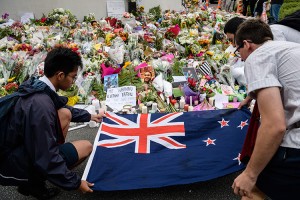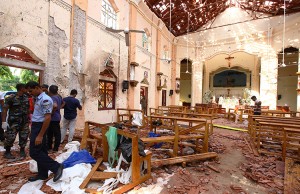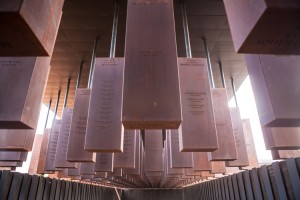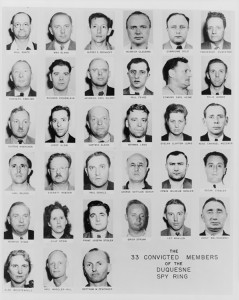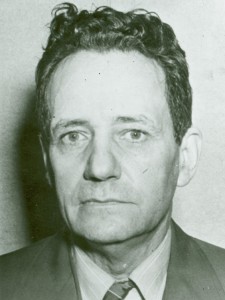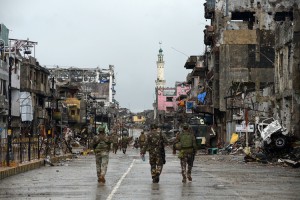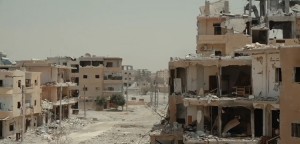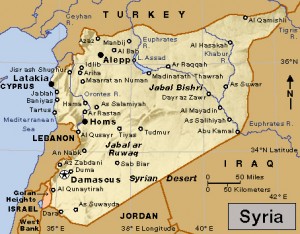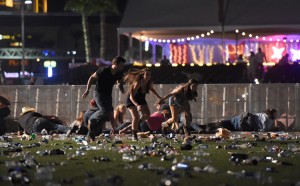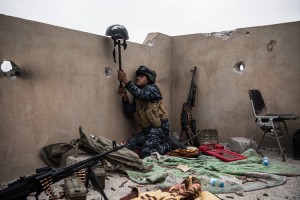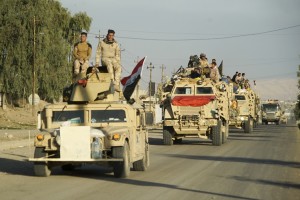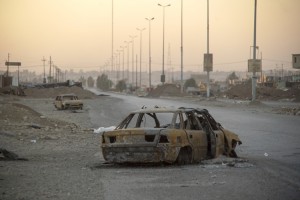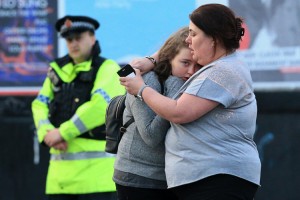World of Disasters
Monday, January 13th, 2020January 13, 2020
Earth has been a particularly dangerous place in recent weeks. Airplane crashes, military clashes, terror attacks, and political unrest have taken a toll on human life and happiness lately, but it is a series of natural disasters that has caused the most trouble. A typhoon ravaged the Philippines, deadly flash floods hit Indonesia, bushfires continued to rage in Australia, a measles epidemic continued to kill in the Democratic Republic of the Congo, and a series of earthquakes rattled Puerto Rico.
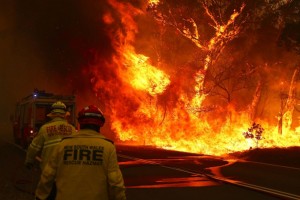
Firefighters confront a bushfire near the Blue Mountains town of Bilpin, New South Wales, on Dec. 19, 2019. Credit: © 1234rf/Shutterstock
On Christmas Eve and Christmas Day Typhoon Phanfone (also called Ursula) struck the Philippines, producing high winds and flooding that killed 105 people in the Visayan Island provinces of Biliran, Capiz, Iloilo, and Leyte. Phanfone was a Category 2 storm (moderate strength) with sustained winds of more than 90 miles (150 kilometers) per hour. Storm surges and deadly flash floods hit communities just as families were gathering to celebrate the Christmas holiday. Thousands of homes were damaged or destroyed.
On New Year’s Day in Indonesia, abnormally heavy monsoon rains caused flash floods that killed 66 people and displaced hundreds of thousands of others in Jakarta, the capital. Some 14.5 inches (37 centimeters) of rain fell on New Year’s Eve, causing the Ciliwung and Cisadane rivers to overflow. Floodwaters submerged more than 150 neighborhoods and caused landslides in the Bogor and Depok districts on the outskirts of Jakarta. Flood water levels in some areas peaked at more than 13 feet (4 meters). Electric power was cut off, and closed schools and government buildings were converted into emergency shelters.
On January 7, the World Health Organization announced the 6,000th death from measles in the Democratic Republic of the Congo (DRC) since an epidemic began there in 2019. More than 300,000 suspected measles cases have been reported in the DRC—a nation also troubled by recent terror attacks. The epidemic has continued and grown because of low vaccination coverage, malnutrition, weak public health systems, outbreaks of other epidemic-prone diseases (such as Ebola), and the difficulty of getting health care to people in remote areas.
In Puerto Rico, after several smaller earthquakes, a 6.4-magnitude temblor struck the southwestern part of the island on January 7. The earthquake, the strongest to hit Puerto Rico in more than 100 years, killed one person, toppled hundreds of structures, and forced a state of emergency. Many people lost their homes, the island briefly lost electric power, and schools and public offices were closed. In the 10 days before the 6.4-magnitude earthquake, the United States Geological Survey recorded hundreds of temblors in Puerto Rico—including 10 of 4-magnitude or greater.
A number of major bushfires have lately devastated southeastern Australia. Since September, the wild fires—mostly in New South Wales, Queensland, and Victoria—have burned more than 25.5 million acres (10.3 million hectares), an area the size of South Korea. The bushfires have destroyed more than 2,100 homes and killed 27 people and hundreds of millions of animals. On January 8, the Australian government ordered the mass slaughter of thousands of wild camels and horses that have invaded rural towns looking for water. Many people are without electric power and telecommunications in Australia’s southeast, and some were without drinking water and other supplies. Smoke has obscured the city skies of Canberra, Melbourne, and Sydney. The bushfires followed a three-year drought that experts link to climate change.

